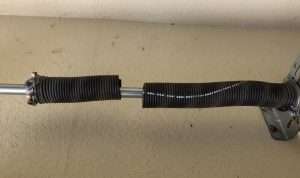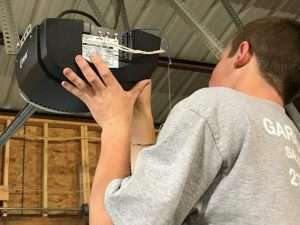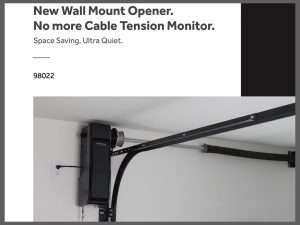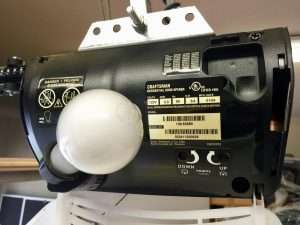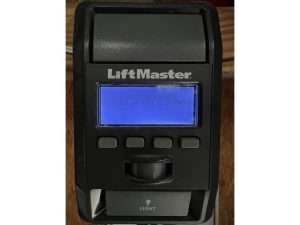Garage Door Opening by Itself? Here’s Why
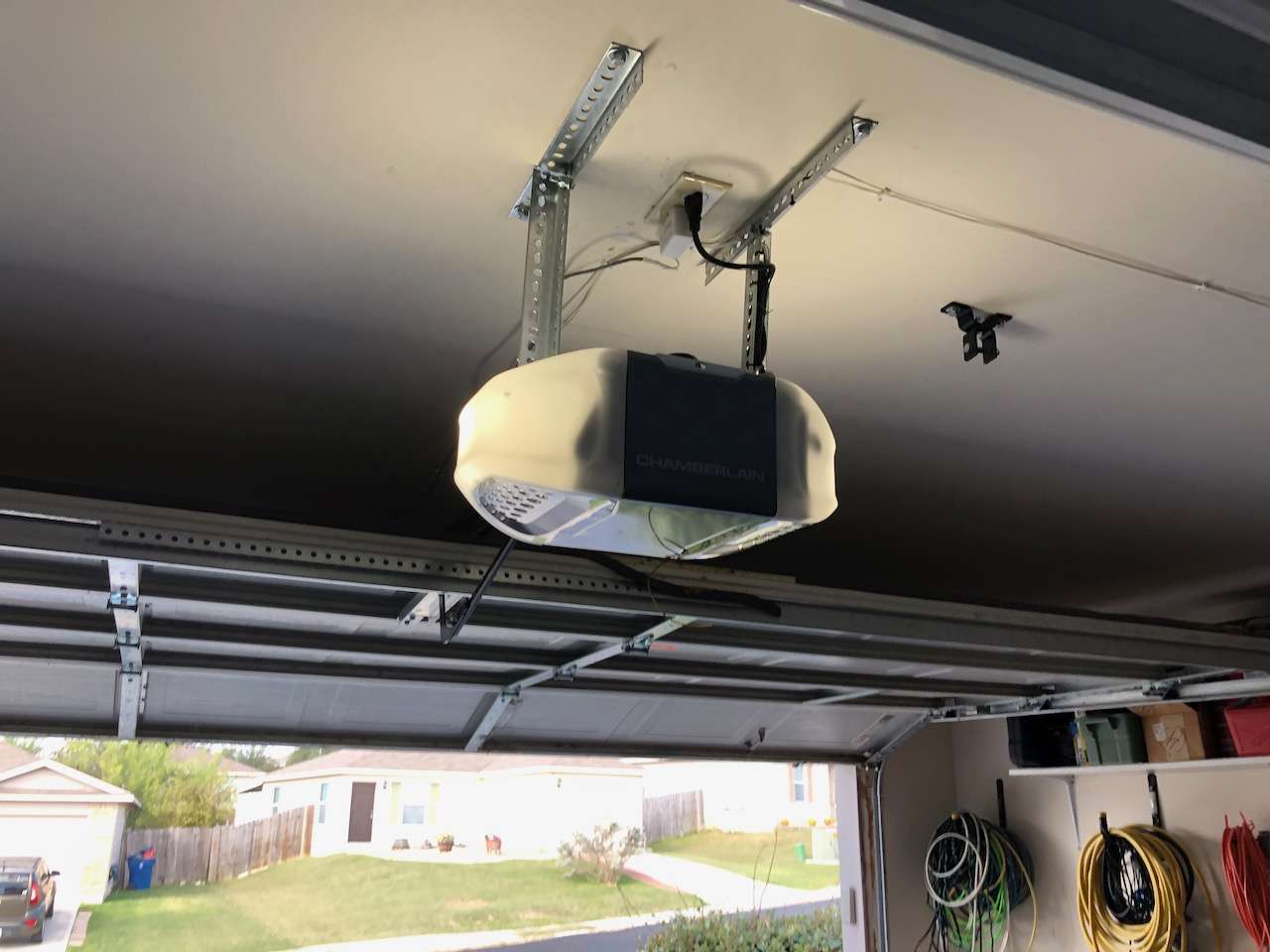
There is nothing more spooky than finding your garage door open when you come home. Especially if you have valuables in your garage. While this is not an issue we come across all the time, it does happen, and it can be resolved fairly easy. In this article, we will take a look at the most common reasons why your garage door is randomly opening, along with a few interesting stories from our time in the field.
You Recently Programmed a Remote, Keypad, or Vehicle
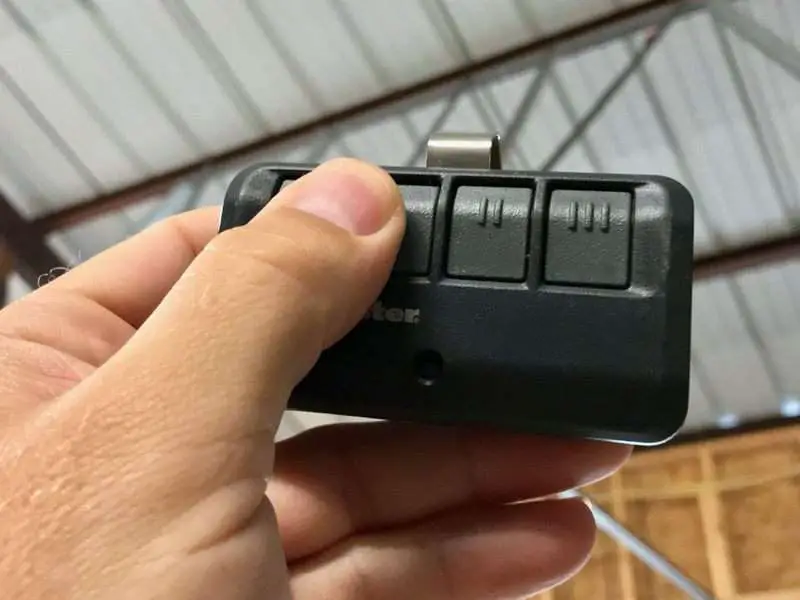
The most common reason we come across as to why a garage door is open is your neighbor has their garage door remote programmed into your circuit board. You’re probably thinking, how could that happen? Well, it happens when you or someone in your household tries to program a new remote, outside keypad, or vehicle into the garage door opener circuit board.
Garage door openers will stay in program mode for 15-30 seconds, depending on the brand. From the time you press and release the “Program” or “Learn” button, and then press the corresponding buttons on your remote or keypad, your neighbor could be opening or closing their garage door. If so, their remote will be programmed into your circuit board if it is the same brand and frequency.
Most garage door openers will flash the light bulb or the LED light next to the “Learn” button will go out once a new device is programmed. If this happens before you program your remote, then someone nearby has programmed their remote into your circuit board. This is more common than you think, especially in dense neighborhoods.
Most houses in newer neighborhoods will have the same brand of garage door opener if the builder had them installed when the home was built. Because of this, you and all your neighbors will use the same remote frequency. Every garage door remote has a unique identifier. If your neighbor’s remote is activating your garage door opener, you need to clear the circuit board and reprogram all your remotes, keypads, and vehicles.
Opener Limits Need to Be Adjusted
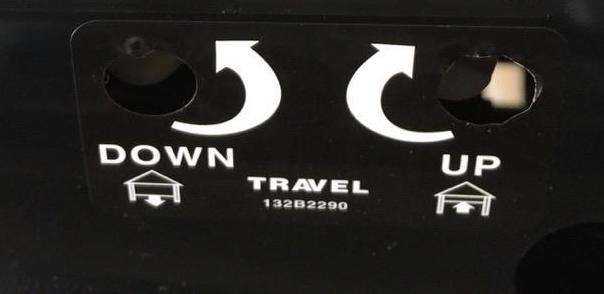
One of the most common installation mistakes we see is the automatic garage door opener is going down too far when closing. Because so many homeowners don’t want gaps under their garage door when closed, they adjust the down limit too far. What happens is the garage door will close, hit the concrete too hard thinking it’s hitting something, and go back up. Since most people get busy and don’t watch their garage door fully close when leaving, they come home to an open garage door.
Your garage door could be adjusted perfectly, but shifts in the home or slack in the opener drive system could cause issues over time. You want your garage door to fully close, but you don’t want the garage door to hit the ground and the opener to keep pushing. This will cause issues over time, so the down limit needs to be backed off a bit to eliminate any problems.
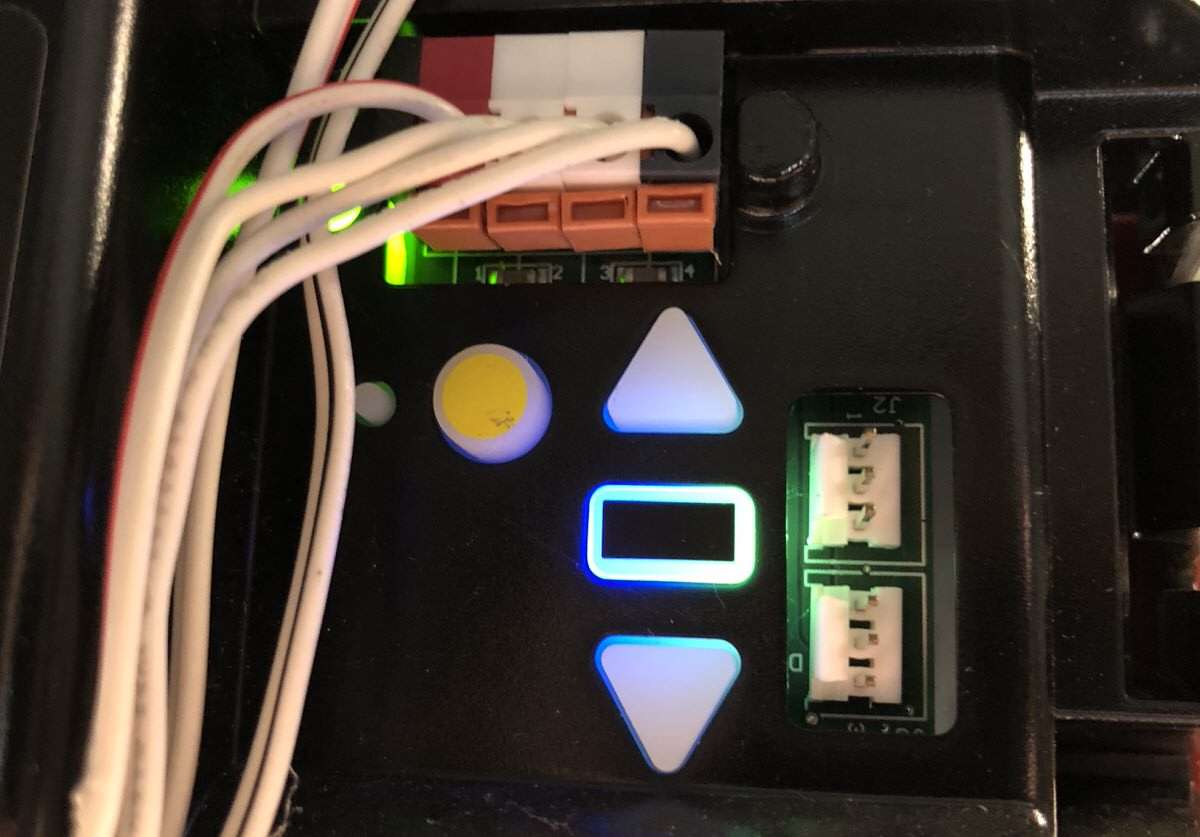
If your garage door opener has electronic limits like pictured above, you will have to reprogram the limits. Some garage door openers will let you only program the down limits, while others require all limits to be reprogrammed. Newer garage door openers today have electronic limits with an automatic force reversal system that will self adjust. Some models will have DC motors, which allows for the popular soft start/stop feature.
Garage Door Bottom Section is Dirty
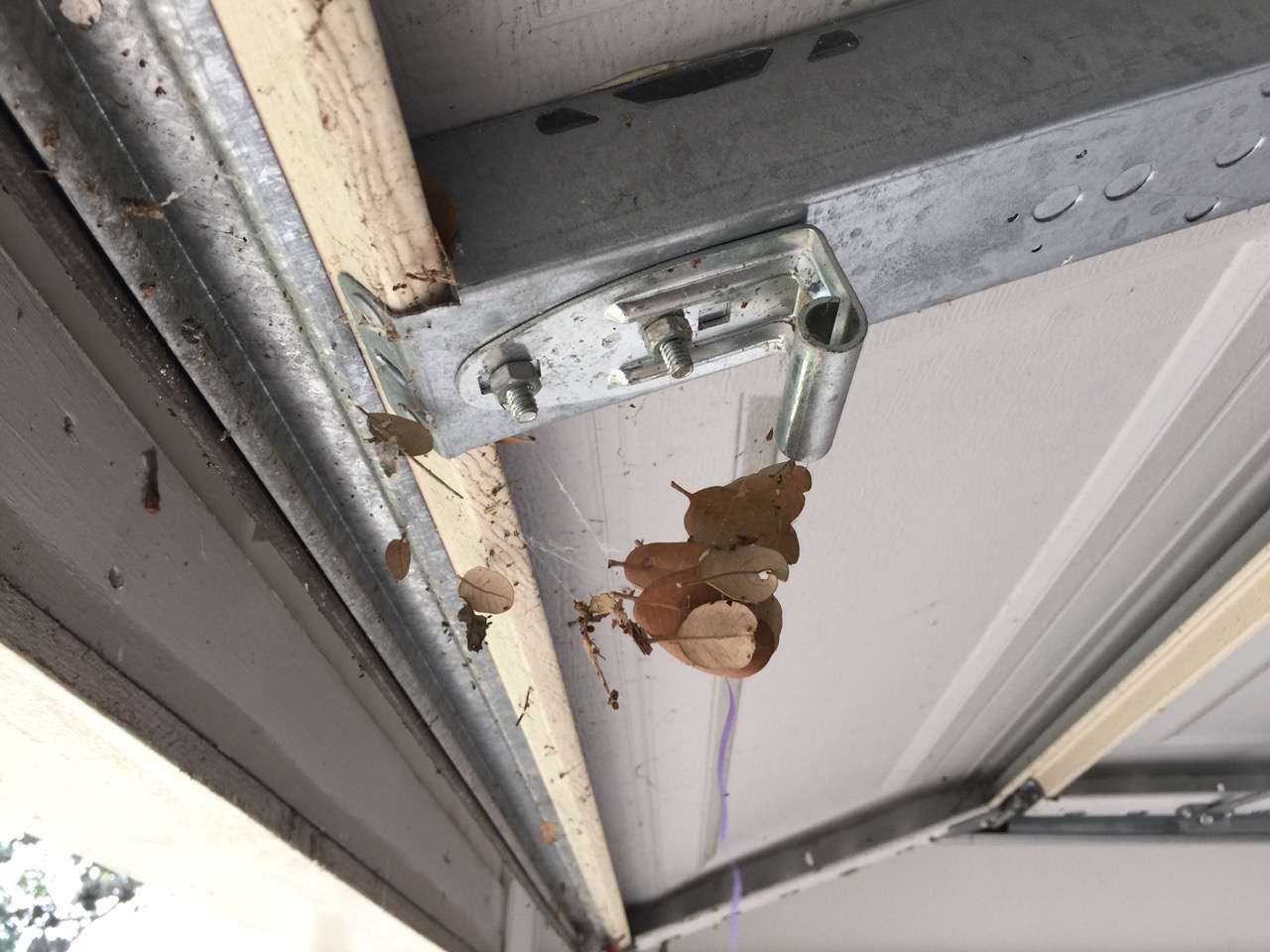
You may think your garage door is randomly opening, when in reality it is never closing. Because you may have driven off not making sure the door was closed, you came home to an open garage door. If the bottom section of your garage door is covered in leaves, grass, and spider webs, the door could be going down until it gets to the safety sensors and reversing.
The debris that is all over the bottom section of your garage door is crossing the invisible beam on your safety sensors, causing the automatic opener to reverse and open back up. This is a very common issue that most people overlook. A quick clean with a broom will get rid of the issue.
Safety Sensors are Moving
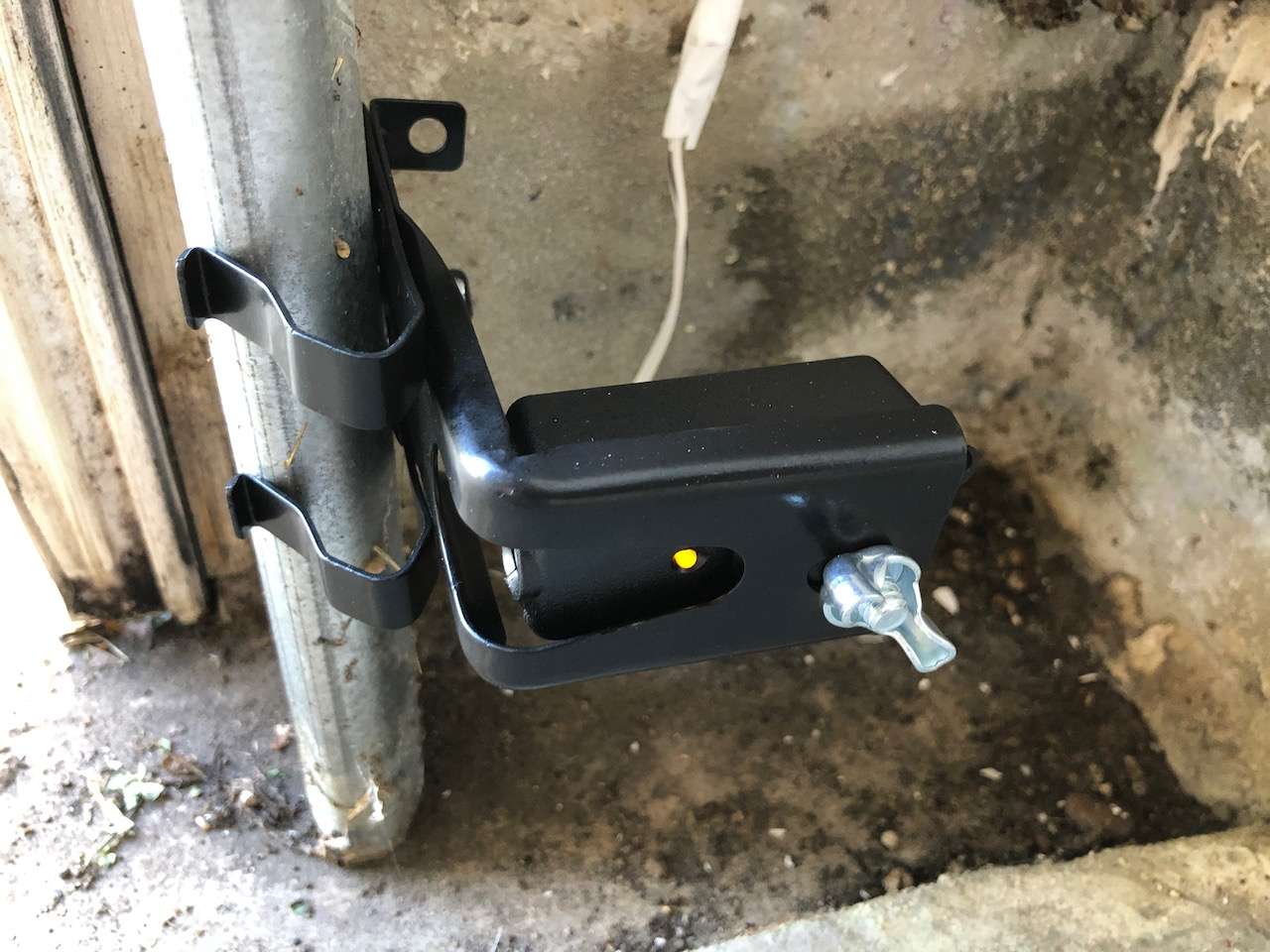
You could be having the same issue we discussed above, but this time it could be the safety sensors are moving when the garage door section gets down about a foot off the ground. If the garage door comes down and pushes the tracks outward, the sensors could be moving enough to cause the garage door to go back up. If that is the case, you need to widen the vertical tracks a little to give the garage door some breathing room.
You Have a Bad Remote

All garage door remotes have circuit boards and buttons that wear out. These remotes can trigger your automatic opener to activate if it is failing. First, start by locating all the remotes you have programmed to your garage door opener.
If you are trying to isolate which remote is bad, you can take the battery out of each one and start by only putting one battery back in each remote every few days. If you put a battery in a particular remote and notice the issue, then you have isolated which remote is bad. Take the battery out of that remote and throw it away.
More commonly we have found remotes in drawers that have something laying on top of the remote activating the button. As someone in the home uses the drawer, the remote activates the garage door to open or close. We have seen it all.
You Have a Bad Wall Button
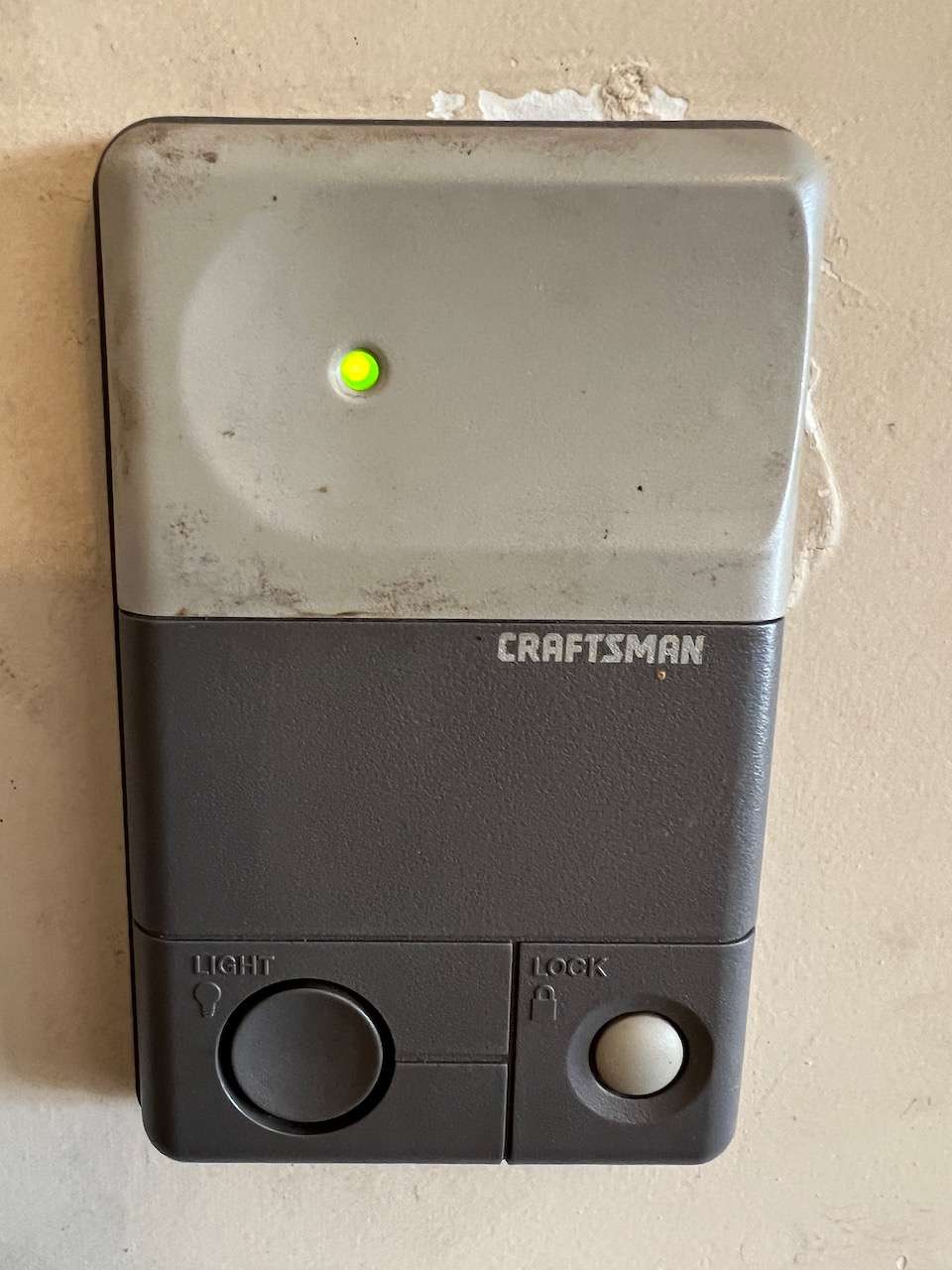
Because most wall buttons have integrated circuit boards, they can intermittently trigger your garage door to activate. Even your basic doorbell style buttons include small circuit boards behind the plastic housing. Even though a wall button circuit board could be intermittent, it’s not the most common issue we encounter.
As a wall button is used over time, the button will start to wear down. As you press this button, you will notice it “jiggles” or has a lot more play than it did when it was new. The worn out button can accidentally activate your automatic opener when someone closes the walk through door going from the garage into the home.
I know this may be hard to believe, but we have seen occasionally where the deep soul rattling bass from a large V-8 motor or Harley-Davidson motorcycle was powerful enough to cause a worn wall button to activate. I didn’t believe it at first either, but after witnessing it at a customer’s home, it was true. You learn something new every day.
LiftMaster 888LM Wall Button Recall

The LiftMaster 888LM wall button was commonly packaged with the LiftMaster 8500 wall mount jackshaft garage door opener and a few other models with a purple learn button. LiftMaster recalled this wall button due to “phantom operation” where the opener would activate by itself, causing the garage door to open and close on its own. To receive the updated 889LM replacement wall button, the homeowner will need to fill out the Free 888LM Replacement Form or call LiftMaster direct, and they will ship a replacement to your home.
LiftMaster says on their website only one replacement wall button per customer, but we did have a customer that we installed five openers for, and they replaced all five wall buttons. LiftMaster has extended the warranty on the 888LM wall button to 2023.
Wall Button Wires are Touching
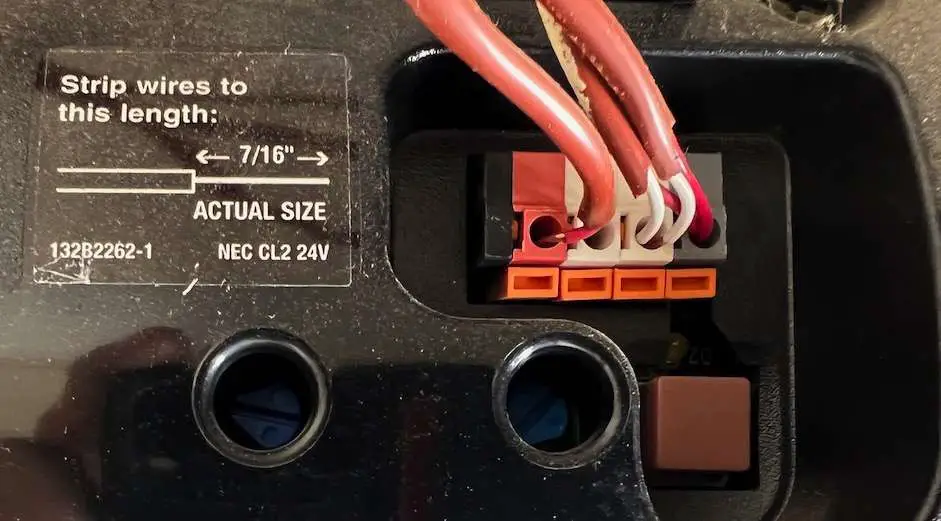
We have seen occasionally where the garage door opener was activating because the two wall button wires were touching by the circuit board terminals. You want to make sure the wires at the motor head are not stripped back too far, leaving exposed wiring. There should only be enough bare copper wire exposed, so it can make contact with the spring-loaded clips or screw terminals, depending on the type you have.

If your automatic garage door opener has screw down terminals like pictured above, make sure the wires are fully wrapped around the screws, making good contact. Furthermore, make sure no wires are touching the terminal next to it. If it is, the garage door opener could activate or not function properly.
Intermittent Circuit Board Issues
The circuit board in a garage door opener is like a human brain. It can misfire and trigger the garage door to open or close randomly. While this is not as common, it may happen. We have seen circuit boards from all manufacturers make random clicking and buzzing noises. Every so often the light bulb will flicker rapidly or the LED light by the learn button will not light up if the board has gone bad. If you are experiencing these issues, you most likely need to replace the main circuit board.
Genie Openers Near the NSA Building
We no longer see this issue, but years ago homeowners in San Antonio, Tx with Genie garage door openers were coming home to a wide open garage door. They also noticed their remote range was limited when trying to open the garage door from a distance. What had changed?
It turns out the NSA built a new building on the Northwest side of San Antonio that was emitting frequencies causing garage door openers to activate and remote range to suffer.
It took a while to figure out, but eventually Genie sent out external receivers to homeowners that used a different frequency. This device connected to the garage door opener circuit board and remotes we’re programmed directly to it. How is that for conspiracy theory?
Garage Door Remote Bouncing on the Bed
This was one of the harder remotes issues for us to resolve. We visited a rental home and the tenant said the garage door would randomly open. I went through all the normal procedures when diagnosing this type of issue, but I kept coming up empty-handed. At this point, you ask questions… many questions as if you are a detective trying to solve a crime.
After speaking with the tenant a while, I asked them to locate all the remotes they had for the garage door opener. They searched in the home and found a remote upstairs on the kid’s bed. Their kids were jumping on the bed, and they would randomly step on the remote activating the garage door. Another CSI investigation solved.
Conclusion
While we probably haven’t seen it all, we have experienced some unique circumstances as to why a garage door would be opening by itself. Hopefully, this article will put your mind to ease by helping you solve this frustrating issue. With newer technologies comes newer problems that need to be resolved, so you can leave your home or go to bed with peace of mind.
